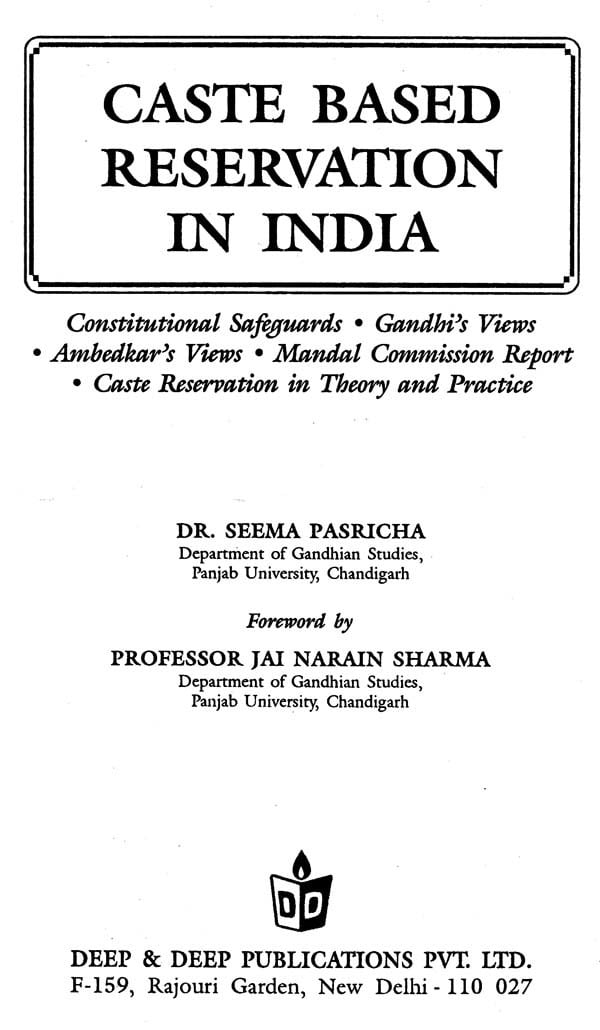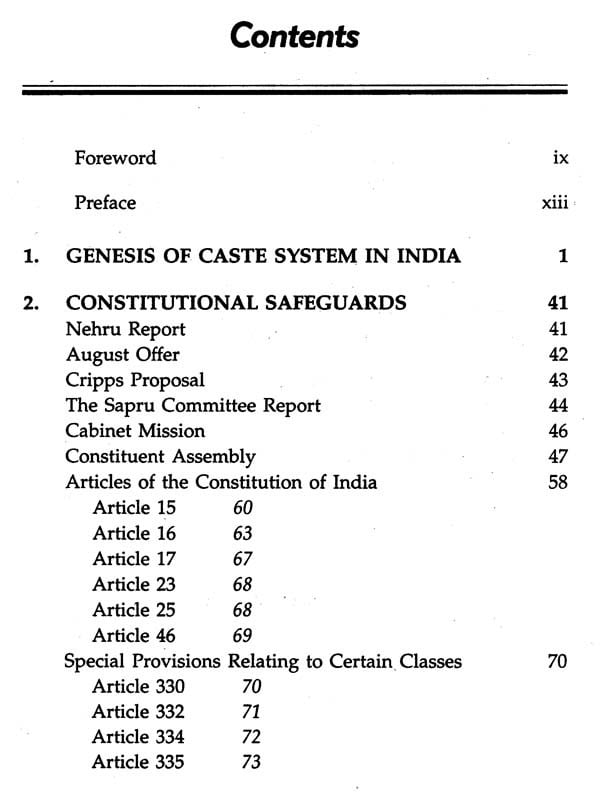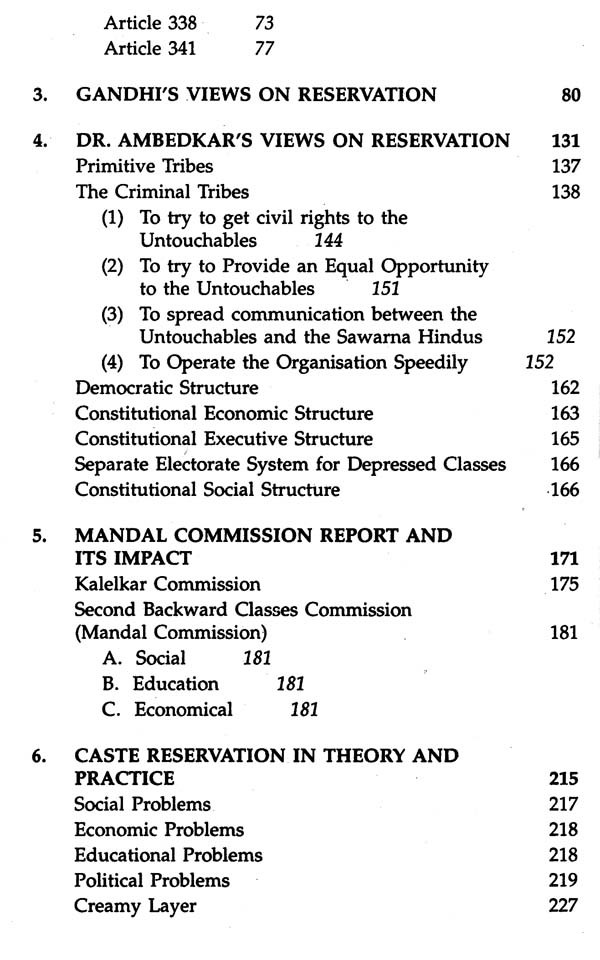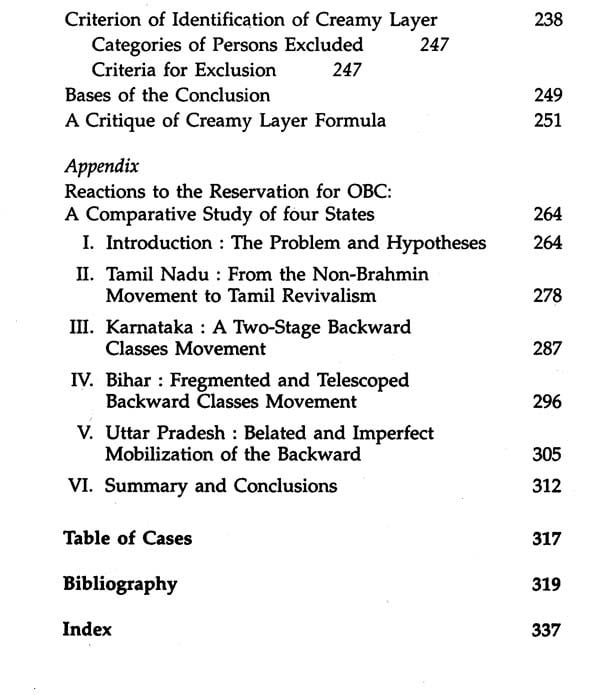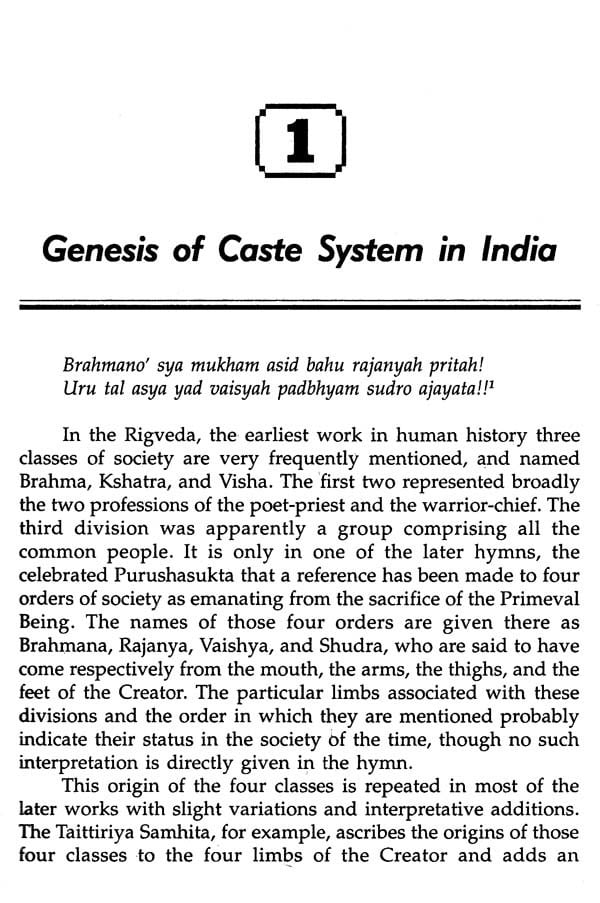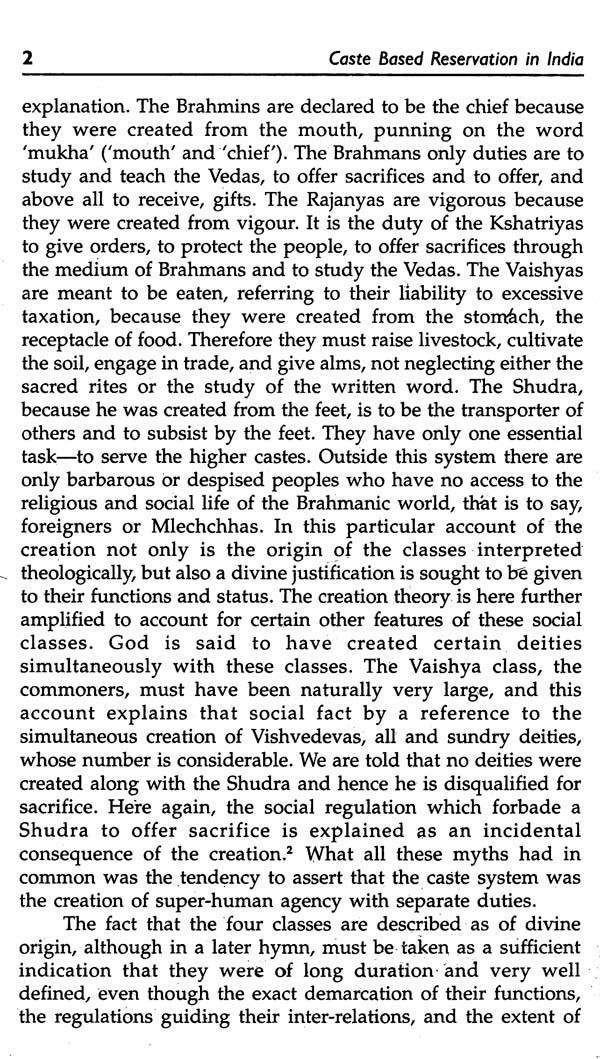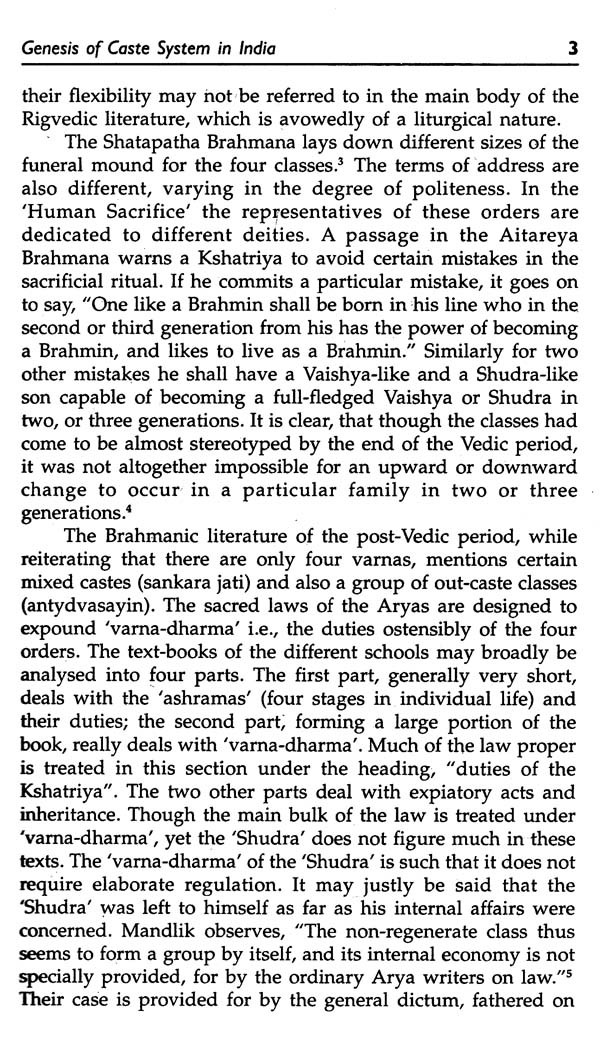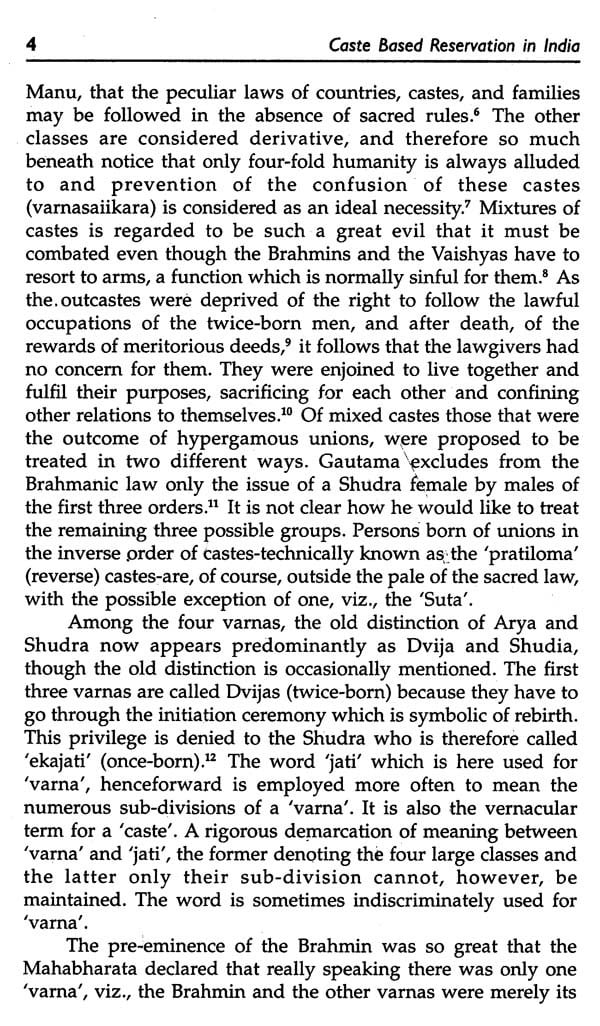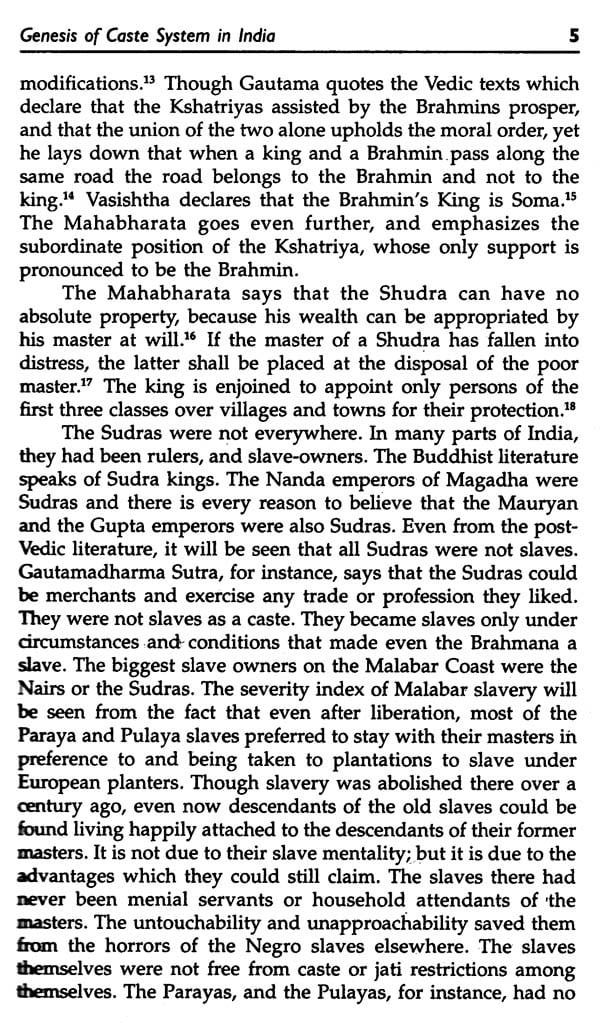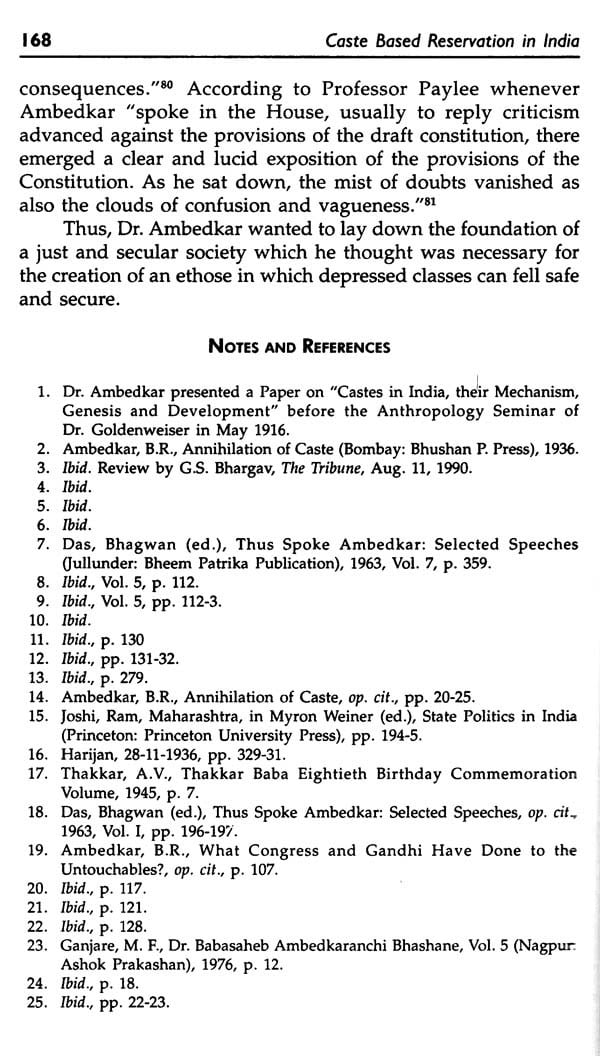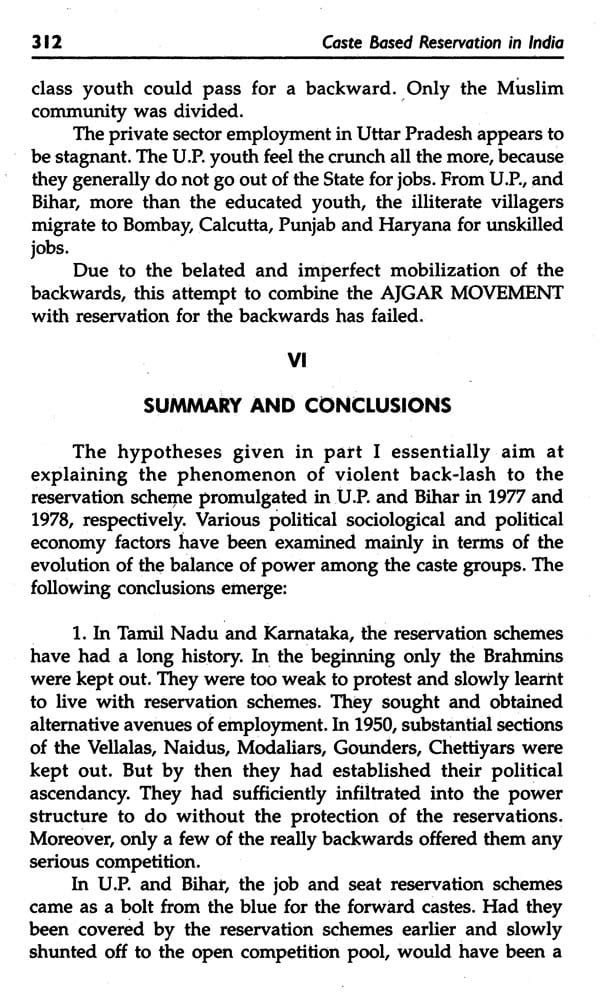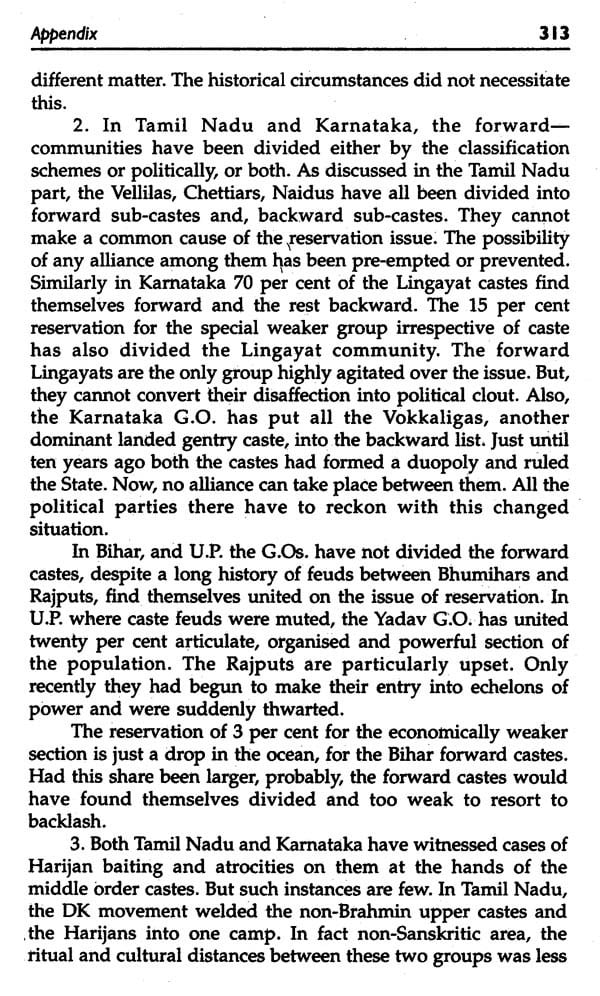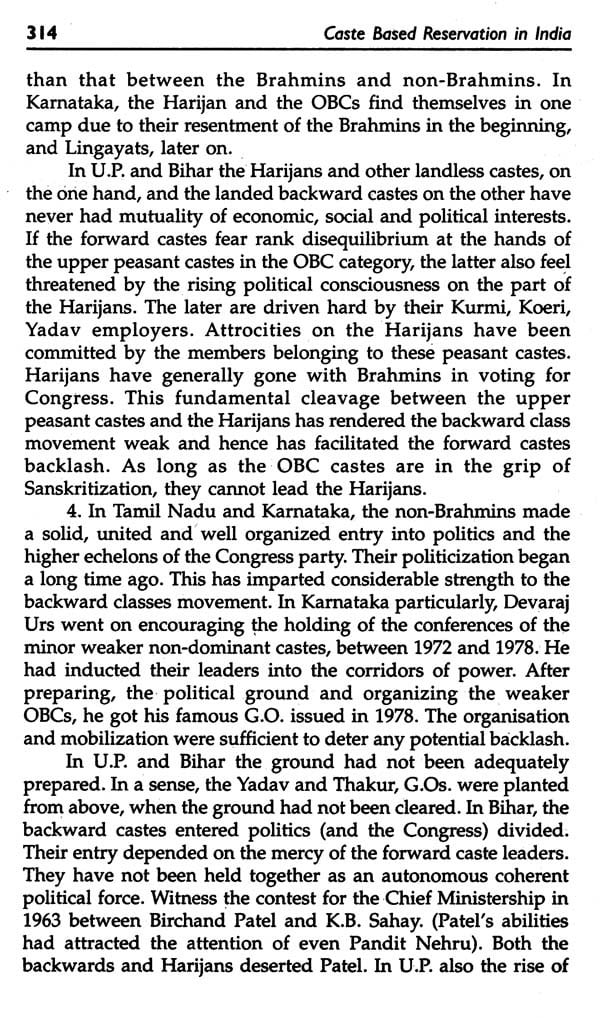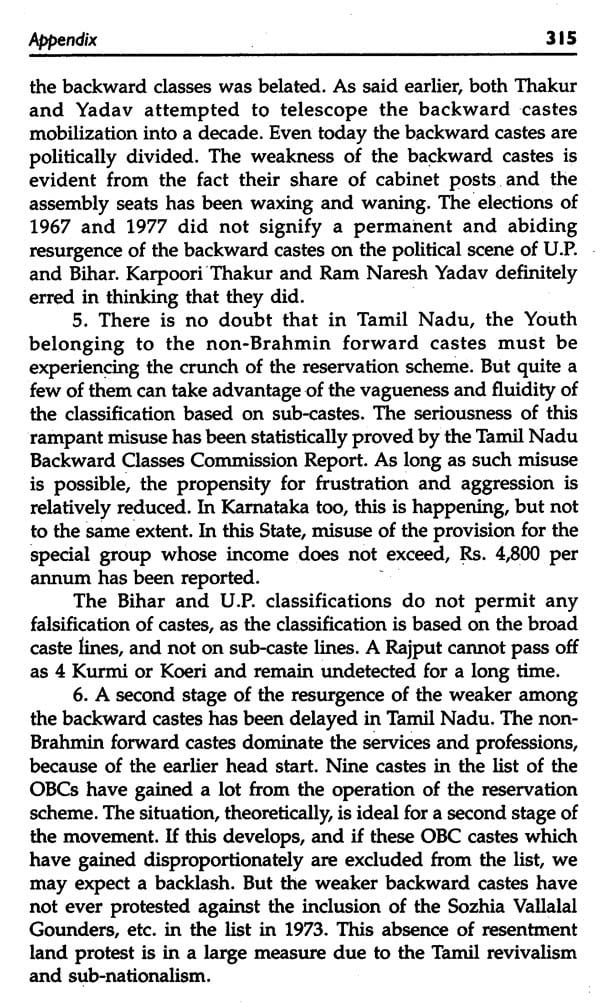
Caste Based Reservation in India
Book Specification
| Item Code: | UBC644 |
| Author: | Seema Pasricha |
| Publisher: | Deep & Deep Publications P Ltd |
| Language: | English |
| Edition: | 2011 |
| ISBN: | 9788176298742 |
| Pages: | 355 |
| Cover: | Hardcover |
| Other Details | 9.00 X 6.00 inch |
| Weight | 570 gm |
Book Description
Reservation is highly emotional subject. It has evoked consideration controversy in recent times It has sparked off agitations and even violence in some parts of the country and blurred the vision of many. It is therefore, necessary to undertake a scientific and objective study of this subject in all its multi-dimensional aspects, taking into account its impact on the society and particularly on the weaker sections. The volume has taken this task and done it quite well.
The book has made a searching analysis of the problem of reservation It will give an opportunity to general readers, law students, politicians and public opinion builders to get some insight into the social bases and motivations of reservations in Indian life at the same time provide the close students of Indian socio-constitutional issues with the accounts based on the original sources on reservation and social justice.
The book will help the curious readers to know the subject in depth and make other curious about the subject.
Contents of this book include: Genesis of Caste System in India; Constitutional Safeguards; Gandhi's Views on Reservation; Dr. Ambedkar's Views on Reservation; Mandal Commission Report and its Impact; Caste Reservation in Theory and Practice; Appendix : Introduction: The Problem and Hypotheses; Tamil Nadu: From the Non-Brahmin Movement to Tamil Revivalism; Karnataka: A Two-Stage Backward Classes Movement, Bihar: Fregmented and Telescoped Backward Classes Movement, Uttar Pradesh: Belated and Imperfect Mobilization of the Backward; Summary and Conclusions.
Dr. (Ms.) Seema Pasricha is a multifaceted personality. She is Postgraduate in Sociology and Gandhian and Peace Studies, M.Phil. and Ph.D. from Punjab University, Chandigarh. Her earlier work "Teaching of Psychology: New Trends and Innovations" has been widely acknowledged as a scholarly work of lasting value. She is associated with the Department of Gandhian Studies, Punjab University, Chandigarh. She has published a number of research papers/articles on different subjects in various Indian and foreign journals of repute. She is also a regular contributor to various prestigious newspapers in the country and abroad.
Human grouping on the basis of caste, with a specific name, which cuts across and affects other mode of grouping, making social differentiation among various groups, is a very widespread feature of our society.
Social stratification in a traditional society is based on caste, ethnic and racial groups. Priority is given to the group rather than to the individual. Insecurity in life makes the individual acknowledge his tie to his family, caste, village and others in that (descending) order. A man classifies his fellowmen in terms of his closeness to, or distance from, his family, caste, etc. Social interactions and political relationship too are dominated by the same consideration.
Unfortunately, India has divided her children into water- tight compartments and has been dividing them from one another over generation. This has been in practice for endless centuries. This process of division through an elaborate, complex and subtle scheme of scripture, mythology and rituals have been permanently assigned high or low ranks simply on the basis of birth and is now deep-rooted, fundamental and accepted as divinely ordained for both the upper castes and the lower castes.
The origin of caste system in India dates back to the Vedic period. The first picture of the social life of the Indo-Aryans was drawn in Rig-Veda, the earliest record of the Vedic period. It points to the functional theory of the origin of the classes and shows how their life was organised on the principles of division of labour which divided the whole society into four major divisions, the Brahmins, the Kashtriyas, Vaisyas and the Shudras. The last one had been introduced at a later date. This class is supposed to have emerged as a result of the Aryans' contact with the Dravidas, the aboriginals of India.
Among the Hindus, religion is not a concern of the philosophers and thinkers only; it has an important say in the daily life of an average man. Moreover, by nature, the Hindu generally falls back upon the traditional agreements for the explanation of such problems. The great lawgiver Manu, in his 'Manu Samriti', added a religious sanction to these castes and their hierarchical arrangement. According to Hindu tradition, "The caste system owes its origin to the four Varnas, which are respectively derived from the Brahmin who sprang from the mouth of the deity, the Kashtriya who was created from his arms, the Vaishya who was formed from thighs, and the Sudra who was born from his feet". To the Sudra was given the duty of serving the three higher Varnas. As he was created from the feet, he had to subsist by feet.
